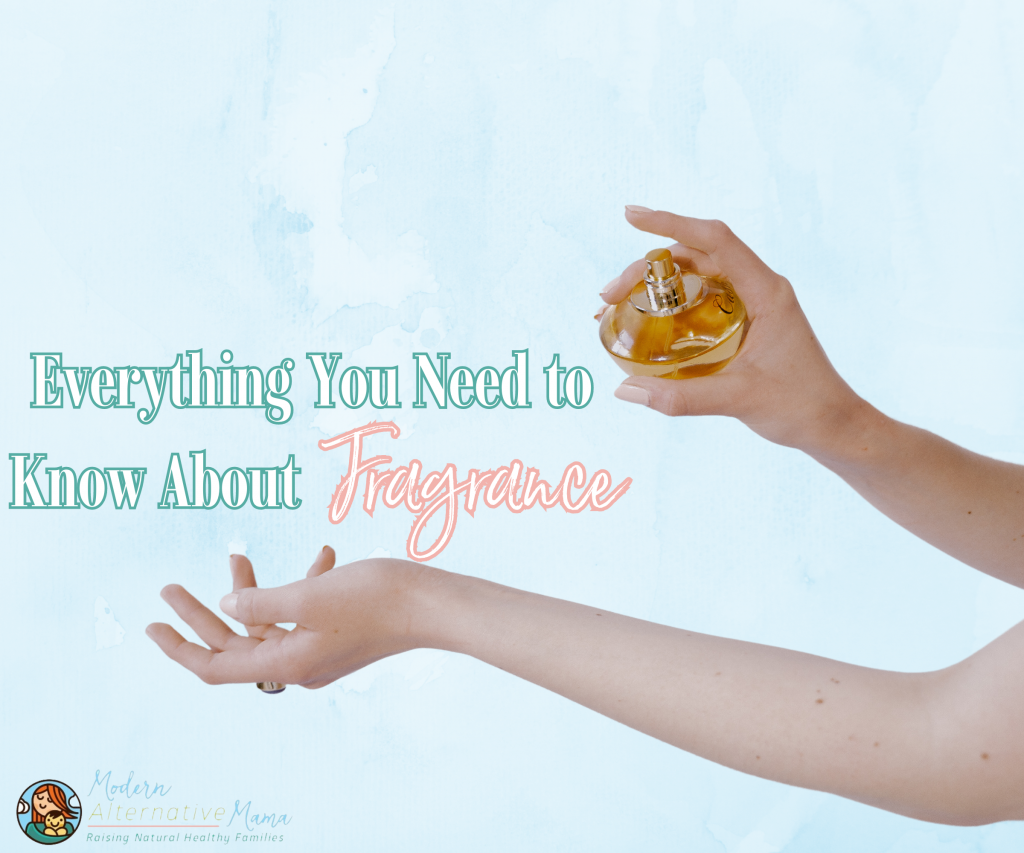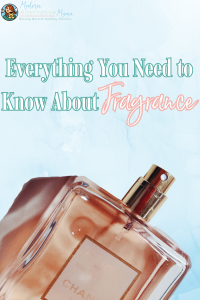There’s a dirty little secret the fragrance industry would rather you not know about when purchasing a product with fragrance; it could contain any number of the 3,100 or so stock chemical ingredients used by the fragrance industry (1).
Hidden behind the pleasant scents of fragrances are typically chemicals linked to hormone disruption, reproductive problems, and even cancer. Although the U.S. Food and Drug Administration (FDA) has the direct authority to regulate harmful ingredients in cosmetics and personal care products, the FDA doesn’t exercise it…
What Is Fragrance
Environmental Working Group (EWG) researchers found more than 75 percent of products listing the ingredient “fragrance” contain phthalates, which have been shown to disrupt hormone activity, reduce sperm counts, cause reproductive malformation, and have been linked to liver and breast cancer, diabetes, and obesity. Additionally, studies by Dr. Philip J. Landrigan of the Mount Sinai Children’s Environmental Health Center link fetal exposure with autism, ADHD, and neurological disorders (2). The Environmental Working Group (EWG) explains:
“When you see ‘fragrance’ on a personal care product’s label, read it as ‘hidden chemicals.’ A major loophole in FDA’s federal law lets manufacturers of products like shampoo, lotion, and body wash include nearly any ingredient in their products under the name ‘fragrance’ without actually listing the chemical.
Companies that manufacture personal care products are required by law to list the ingredients they use, but fragrances and trade-secret formulas are exempt (3).”
Laboratory tests commissioned by the Campaign for Safe Cosmetics and analyzed by EWG found 38 chemicals not listed on the labels in 17 name-brand fragrances (i.e., Chanel, Giorgio Armani, Bath & Body Works, Old Spice, Calvin Klein, etc.). The average fragrance product contained 14 chemicals not disclosed on the label and another 15 listed! The report noted:
“Among them are chemicals associated with hormone disruption and allergic reactions, and many substances that have not been assessed for safety in personal care products (4).”
According to HuffPost’s article titled Five ‘Must-Knows’ on the Dangers of Synthetic Fragrance:
“More than 95 percent of the chemicals in synthetic fragrances are derived from petrochemicals. These chemicals include: benzene derivatives, aldehydes, phthalates, and a slew of other known toxins that are capable of causing cancer, birth defects, nervous-system disorders and allergies–some of which are cited on the EPA’s hazardous waste list (5).”
What’s Hidden Behind The Word “Fragrance”
The International Fragrance Association has a “transparency” list dedicated to the thousands of ingredients labeled as a fragrance. You’ll find some pretty nasty ingredients on this list, including but not limited to:
- Citric acid naturally occurs in oranges, lemons, and other citrus fruits and is perfectly safe. Citric acid also naturally occurs in Aspergillus niger, also known as black mold (6). Health problems associated with this type of mold include respiratory infections, allergic reactions, and inflamed lungs (7). I recommend looking for a cassava-based citric acid, which is what Earthley Wellness uses.
- Corn oil is typically made using genetically modified organism (GMO) corn. In 2010, about 90 percent of corn grown in the United States was GMO (8). Additionally, about 10 million Americans are allergic to corn (9).
- Formaldehyde can cause watery eyes burning sensation in the eyes, nose, and throat. Short-term use can cause coughing, wheezing, skin irritation, and nausea. Long-term, they aren’t too sure but believe it may cause an increased risk of cancer (10).
- Hydroxy steroids are derived from steroids, with hydroxy replacing hydrogen. Steroid use has been linked to liver problems, heart problems, stroke, blood clots, and cancer (11).
- Paraffin wax is derived from Petroleum, coal, and shared oil. This wax has been found to contain known carcinogens, including Acetone, Benzene, and Toluene (12). Exposure to carcinogens like this may cause headaches, kidney damage, congenital disabilities, bone marrow damage, respiratory issues, nausea, and cancer (13).
- Peanut oil is prone to oxidation. Oxidation may result in the formation of free radicals, damaging the body, known as oxidative stress. This damage may even lead to premature aging (14), certain cancers (15), and heart disease (16). Peanuts are one of the top allergens in America, with 1 in 50 children being allergic (17). We can’t bring peanut butter and jelly to school but can douse ourselves in fragrance.
- Silica dust particles are so small you cannot see them. The inhalation of silica dust particles can result in particles becoming trapped in lung tissue. This can result in inflammation, scarring, and reducing the lungs’ ability to take in oxygen. Silica dust inhalation can also result in lung cancer, Chronic Obstructive Pulmonary Disease (COPD), kidney disease, and autoimmune disease (18).
- Soybean oil is usually brimming with GMOs, causing less nutritional value and more toxic effects due to the chemicals involved in the genetic modification process. Soybeans contain compounds like phytate, which may interfere with the body’s ability to absorb vitamins and minerals. Learn more regarding .
- Tobacco extract is usually used as a cigarette flavor enhancer. Of course, tobacco contains nicotine, which is quite toxic. If secondhand smoke results in nearly 34,000 premature deaths in the United States from heart disease each year and an increased risk of developing heart disease by 25-30 percent (19), just imagine what’s going on with tobacco extract. Additionally, nicotine is very toxic to mammals through ingestion and skin contact (20).
- Turpentine oil can cause serious side effects, including headaches, sleeplessness, coughing, lung bleeding, vomiting, kidney damage, brain damage, coma, and death (21).
View The International Fragrance Association’s full “transparency” list here.
Now, let’s dive into the risks of fragrance a little deeper, with more scientific data to back it up.
The Risks Of Fragrance
Attention-Deficit/Hyperactivity Disorder (ADHD)
With more than 95 percent of fragrances containing phthalates (22), it’s important to understand what phthalates do to the body. Research has found certain phthalates in urine samples of adolescents with Attention-Deficit/Hyperactivity Disorder (ADHD), even with ordinary exposure (23).
Disrupts Hormone Activity
One study discusses the adverse effects of the fragrance constituents and links these chemicals’ endocrine-immune-neural axis perturbation pathways to be valid. This study discusses fragrance exposure causing pivotal stressors, estrogen hyperproduction, aromatase upregulation, and more (24). Of course, there are rumors about lavender and tea tree essential oils causing issues with puberty. What they didn’t mention about the study was that the product in question contained not only lavender and tea tree essential oils but also fragrance. This was a single study that didn’t test any other ingredients in the products for additional variables causing the problem. This is not a valid scientific claim; you’ll see why in the next few paragraphs.
Reduced Sperm Count/Premature Formation
One article discusses a common fragrance substance in perfume and cologne, diethyl phthalate. This substance is known to cause damage to sperm. It has also been found to cause premature breast formation in developing baby girls and abnormal sexual development in male fetuses, including cryptorchidism. The study concluded:
“Despite the well established documentation on the effect of fragrance materials on human health, there is a need for further investigations in humans to determine its safety margin as far as fertility is concerned (25).”
But the lavender and tea tree essential oil was definitely the problem in the study with the three boys, right?
Reproductive Malformation
Aside from the reduced sperm count, early breast formation in baby girls, and sexual development in the fetus, studies have found a link between fragrance and genital abnormalities. This leads us back to phthalates, which seem to alter the reproductive organs of baby boys (26). Additionally, they’ve found this same risk for embryos, resulting in subtle changes in the size and anatomy of genitals (27).
Cancer
Several cancer organizations claim there is no evidence associating the use of fragranced products with an increased risk of cancer in humans. This isn’t quite true. Let’s start with petroleum. The European Union classifies petrolatum as a carcinogen and restricts its use in cosmetics (28). Petroleum may be contaminated with polycyclic aromatic hydrocarbons (PAHs), which are also associated with cancer (29). Additionally, petroleum has been linked to estrogen dominance. Estrogen dominance is a common condition in which sufferers have a high ratio of estrogen, with little to no progesterone to balance the effects of these chemicals in the body (30). That’s not counting ingredients like benzene, silica, formaldehyde, and more, all known by the CDC to be associated with cancer (31).
Diabetes
We fall right back to phthalates… again. Phthalates may increase your risk of diabetes. Better yet, those with higher phthalate levels have double the risk of type 2 diabetes (32). Additionally, researchers have linked phthalates to an array of medical issues. Some include asthma, breast cancer, obesity, low IQ, neurodevelopmental issues, behavioral issues, autism spectrum disorders, and more (33).
Natural Scent Alternatives
Whether you’re looking for your home to smell fresh and clean or yourself. Candles, room sprays, perfumed cleaning supplies, body sprays, scented shampoos and conditioners, and anything that smells delicious may have lurking chemicals. Most mainstream scented items in the store are manufactured using artificial and toxic fragrance ingredients. Instead, try one of these natural scent alternatives.
Essential Oils
Diffusing essential oils is an easy and cost-effective way to scent your home (and get therapeutic benefits, too). A diffuser also allows you to use essential oils safely without the oils physically touching your skin, so it’s generally safe. These small appliances work by creating steam mixed with essential oils and water. The oils then disperse into the air in tiny doses. You can also use essential oils to make homemade nature perfumes. I highly recommend Earthley’s essential oil line.
Simmer Pots
Simmer pots, sometimes called stovetop potpourri, are simple combinations of everyday kitchen ingredients added to a pot of water. Simply bring the water to a boil before reducing it to a low simmer. As the water evaporates, it naturally aromatizes your home. These are especially fun to utilize in the spicy scents of the fall and winter seasons.
Learn more about natural scent alternatives by downloading Earthley’s guide, The Clean Home Project.



